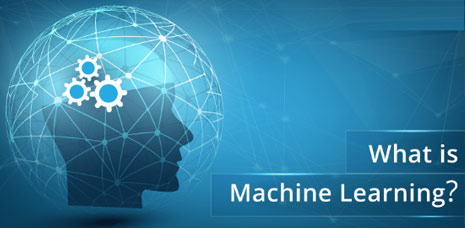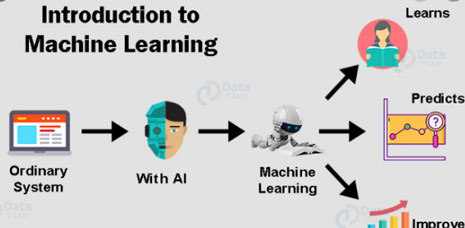What is Machine Learning? Exploring its Impact on Customer Experience
As technology has continued to advance, we’ve seen some pretty impressive strides in artificial intelligence. We have a virtual assistant in our pockets at all times, can integrate home technology into voice activated commands, and have even started to develop robots who can hold actual conversations with humans. While some people see this as a frightening glimpse into a robot-dominated world, others view it as a necessary step into the future.
With artificial intelligence on the rise, machine learning is beginning to make AI even more identifiable. While the actual idea of machine learning has been around since the 1950s, it hasn’t always played out in beneficial matters. However, as more people continue to use integrated smart technology in their lives, machine learning is beginning to become increasingly prevalent and important. In this article, we’ll explore what machine learning is and how it impacts customer experience.

What is Machine Learning?
Machine learning is the scientific process of teaching computers to learn and act similarly to humans. It’s a subset of artificial intelligence that uses certain algorithms similar to predictive analysis. The overarching goal of machine learning aims to use data in a way that improves the behaviors of machines. It allows them to identify recurring patterns to encourage autonomous learning that’s not powered by a pre-programmed algorithm. For machine learning to occur, a computer needs to be able to observe real world interactions and user experiences.
Deep learning takes machine learning to the next level. It works using even smaller patterns and connects the deep neural network of your activity to deliver predictive results.
The Basic Concepts of Machine Learning
In the most basic concept, machine learning works the same way that human learning works. When we see something for the first time, we observe how other people interact with it, talk about it, learn from it, or manipulate it. Our brain then forms new neural connections that allow us to store it in our memory and use the information later. Machine learning is similar. Computers use statistics, looks for patterns, and analyze data so that they can be processed by their internal algorithm and stored for later use.
There is more than one different type of machine learning, such as deep learning mentioned above. Each of the types of machine learning styles are grouped based on learning style, but they all consist of three basic processes: representation, evaluation, and optimization.
- Representation – machine learning uses a set of specific classifiers or languages that allows your computer or device to understand behaviors and find patterns
- Evaluation – once your computer or device can understand behaviors and patterns, they begin to evaluate them in order to determine what the underlying objective is
- Optimization – after an objective is determined, your computer or device will deliver specific search results that allow for an optimized customer experience
How Machine Learning Works

For machine learning to work properly, computers need to be able to collect as much data about the situation as possible. In many instances, this means collecting data about you—the user. For example, Spotify works differently for every user and creates targeted playlists based on activity. The same process is used on Netflix to create recommended show lists and is the reasons that one person’s home screen has certain categories that their neighbor or family members don’t see. It’s all about aggregating information so that the results are tailored to a specific person. This is what makes it so beneficial for improving customer experiences. It allows computers, televisions, or phones to predict what you’re going to want and show you options before your brain has a chance to process it. Some people start thinking about this process in too much depth and get a little creeped out—like when you start thinking about what you want to eat, and an ad pops up on Facebook. However, this is just an example of how machine learning works. Chances are these enterprises have learned what you like and don’t like, and these instances occur naturally due to algorithms and extended learning periods rather than coincidentally.
Challenges and Limitations of Machine Learning
As with all technology, there are a few challenges and limitations of machine learning. The first problem is that computers can exhibit bias towards certain data and therefore they do not analyze and use that data in the learning process. Another problem is the dimensionality of machine learning. In certain instances, algorithms tend to work better if they have fewer features—more features and more dimensional data causes difficulty in interpretation and understanding.
Machine learning can make mistakes and therefore is not a comprehensive solution to any problems. Machine learning is best used in conjunction with other successful tactics to help improve the overall customer experience without experiencing shortcomings.
How Customer Experience Improves with Machine Learning
One of the best parts of machine learning is its ability to advance a business’ sales, current promotions, or offers. Popular corporations that use machine learning regularly in their business model include Netflix, Facebook, Spotify, Pinterest, Twitter, Amazon, Salesforce, and Twitter. In fact, it’s difficult to find a successful business that doesn’t use machine learning in some way or another.
Better Personalization
Since machine learning allows your computer to understand your actions and eventually predict your desired behaviors, it creates a better overall personalization. In fact, many consumers expect machine learning when they go onto a website or decide to use a business or service. While this expectation isn’t known to the public as “machine learning,” they still want and enjoy thee personalization. Almost all of consumers find personalization to be appealing and are more likely to do business with a company that offers personalized experiences.
Machine learning can enhance this personalization and provide predictive behavioral analysis. This means that you’ll be able to improve your overall sales, boost company loyalty, offer customized home pages based on user history, and give consumers what they want. Nearly every company has seen an improvement in customer relationships when they use machine learning correctly.
Increased Convenience
Personalization breeds convenience. When your computer knows what you want, it makes things so much easier. The more businesses can improve convenience for their customers or visitors, the more profits they’re going to make. Machine learning helps to enhance the convenience and create an exceptional user experience that can be accentuated by voice assistants or automated messages.
The power of machine learning can be seen when you examine the role of voice assistants in everyday life. When they were first introduced, people were hesitant to integrate this type of technology in their homes. Now, over half of all homes have some sort of voice assistant or smart technology. Why? Because it’s convenient. The more someone uses a voice assistant, the more the voice assistant learns about a person and their behaviors. This leads to better business transactions and a happier customer base.
More Accurate Information
Machine learning allows computers to take care of information that’s often subject to human error. One example is when you look at inventory. If you have the wrong information about your inventory, it’s going to ruin customer experience and create hesitancy in future sales. Machine learning can help you create accurate inventory levels and even predict when you’ll need to restock. Based on the behavior of users and their buying habits, machine learning is able to notify you when you need to order more product so that your stock levels never run out. This leads to faster delivery for your customers and few, if any, backorder problems.
How to Integrate Machine Learning in Your Business
If you’re interested in applying machine learning to your business, it’s important to make sure that you fully understand the best practices and concepts surrounding it. Remember, machine learning is not an independent solution and should not be used on its own. Doing so could lead to inconsistencies and problems that cause customer confusion. Some best practices for using machine learning with your business include the following:
- Make sure that you have enough data to train your machine learning models before they are used to enhance customer experience. You need to have the right features in place.
- Create seamless training data so that machine learning algorithms can perform without errors or problems.
- Try your machine learning algorithm out with experimental data first rather than observational data so that you can control the environment and help aid in the development.
- Don’t try to create simple connections to help enhance machine learning. Machine learning is capable of analyzing complex data and actually requires this in order to become better and more accurate.
- Run tests, analyze the results, and make changes as needed. Machine learning will continue to occur after it’s deployed and it’s important to continue to track its progress.
If you’re interested in learning more about machine learning, or want to start integrating it into your business, contact the software development professionals at Plego Technologies today.
